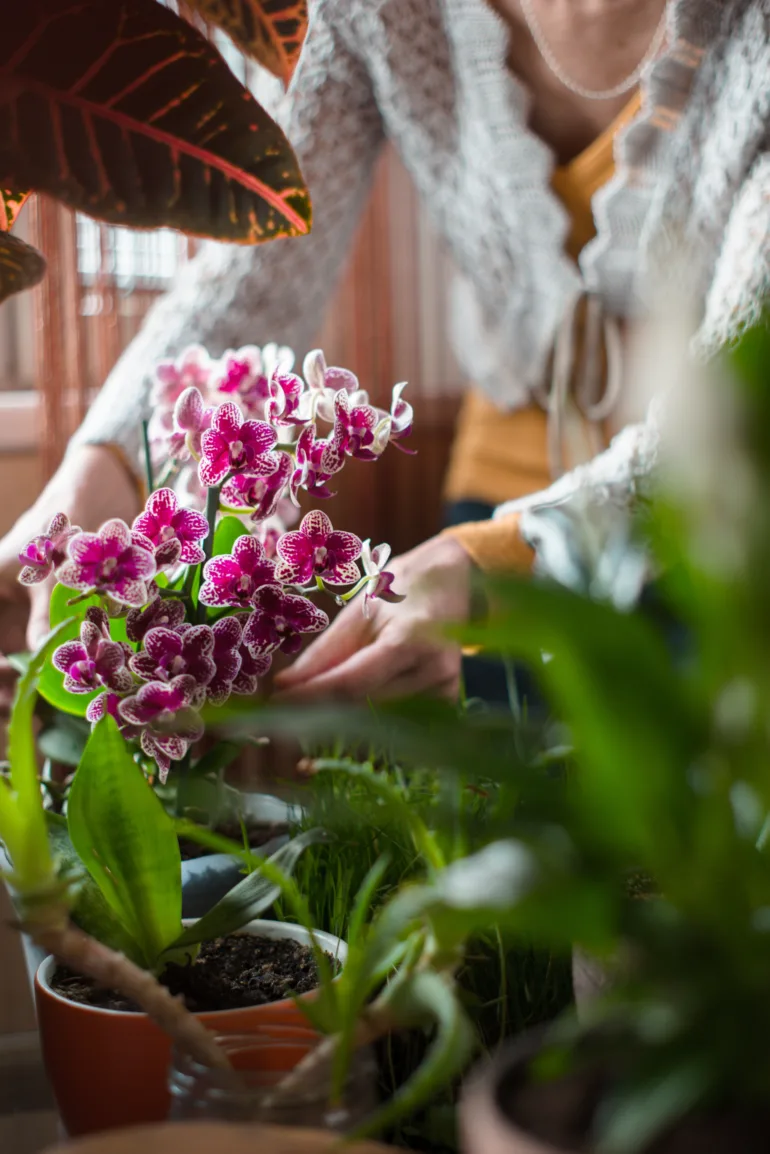Winter is a time when nature calms down and rests – but that doesn’t mean we can relax completely when it comes to our houseplants. Orchids, these elegant beauties with an exotic touch, are known for their delicate and demanding nature. Although we may think of winter as a time to “pause,” it’s during this period that orchids need special attention. Proper care will ensure they shine in all their glory in the spring.
Have you ever admired your neighbor's an orchid full of lush flowers, and wondered how this is possible? The secret is probably in proper winter care. Temperature, humidity, light and watering – these are all key factors that you need to keep under control. But don't worry, proper care is not a science for astronauts. Below we will reveal some simple but effective tricks that will make your orchid a real queen from the first spring rays.
Winter is a time for rest, not for “diets”
Orchids slow down their growth in winter. This does not mean that we should do nothing with them, but they need less watering and feeding. Water them only when the substrate is completely dry, which can happen only once every two weeks in winter. Instead of abundant fertilization, use fertilizers with a lower nutrient concentration - once a month is enough.

Light is the key to success
In winter, there is less natural light, so orchids often suffer from a lack of light. Place them in the brightest spot in your home, but protect them from direct winter sun, which can burn the leaves. If you live in a darker home, consider using LED plant lights. These are energy efficient and provide the plant with the necessary spectrum of light.
The air should not be as dry as a desert
Central heating is the number one enemy for orchids. The warm, dry air from radiators causes the roots to dry out and the leaves to turn yellow. To prevent this disaster, make sure the air is humid. Use a humidifier or place a bowl of water next to the orchid. Another trick: place the plant on a tray with pebbles and water, but make sure the roots are not in direct contact with the water.
Find equilibrium at temperature
Orchids love stable temperatures, so don't place them near radiators or drafts. The ideal temperature in winter is between 18 and 22°C during the day and slightly lower at night. This temperature difference is actually beneficial for them, as it encourages the formation of flower buds.

Pruning with feeling
If your orchid is dropping flowers, it doesn't mean it's time to panic. You can only prune old flower stalks when they are completely dry. However, if the stalk is still green, leave it - it may produce a new flower. Use clean scissors to prevent infection, and cut just above the third node.
Transplant? Yes, please!
If you notice that your orchid has dry or rotten roots, winter is a good time to clean and repot it. Use a special orchid substrate that is airy and allows the roots to breathe. Never repot it in a pot that is too big - a smaller space encourages better growth.
A shortcut to spring blooms
Did you know that cooler conditions at night can encourage flowering? If you have the opportunity, move your orchid to a room where the temperature drops to around 15°C at night. This trick mimics their natural conditions and helps the flowers form.
With a little patience and the right care, your orchid will be a real diva in the spring – full of flowers that will make your neighbors and friends jealous. Your efforts will be rewarded with natural beauty that never disappoints. Now, roll up your sleeves and make sure your orchid survives the winter in royal style!






